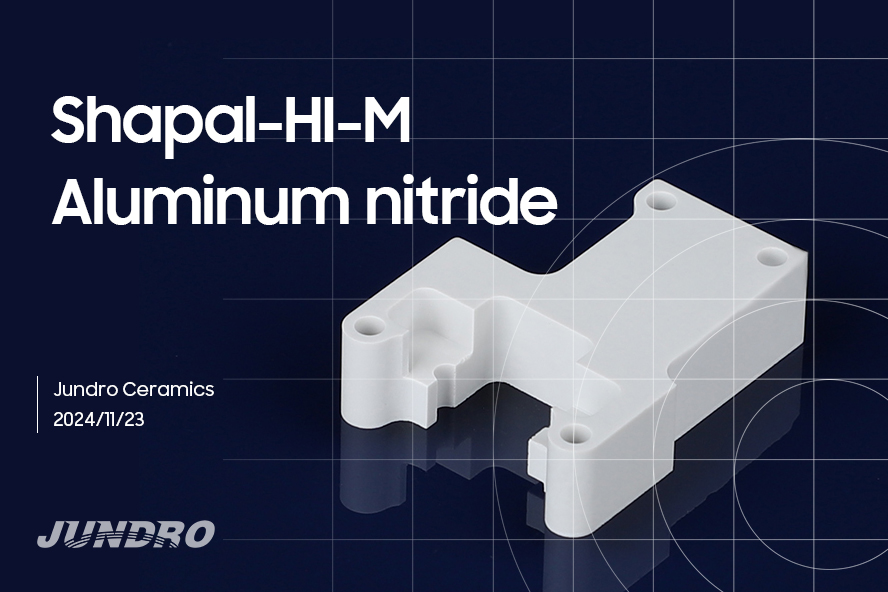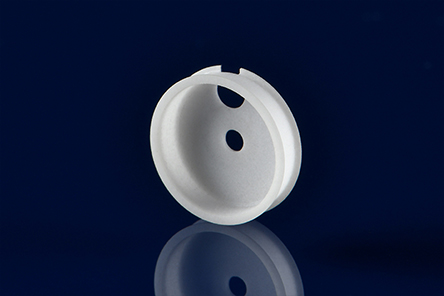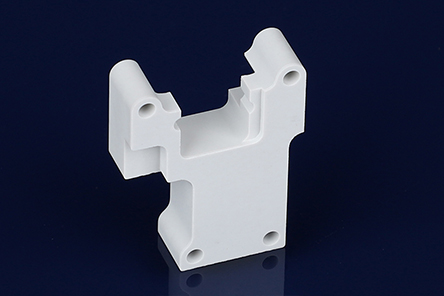
Aluminum Nitride Ceramics vs.Machinable Aluminum Nitride Ceramics
When it comes to high-performance materials, aluminum nitride (AlN) ceramics stand out due to their excellent thermal and electrical properties. However, the emergence of machinable aluminum nitride ceramics has added a new dimension to this field, achieving a balance between performance and ease of manufacturing. This article provides a detailed comparison of these two materials, exploring their properties, advantages, challenges, and ideal applications.
Understanding Aluminum Nitride Ceramics
Aluminum nitride ceramics are highly valued in advanced industries for their ability to handle extreme thermal and electrical demands. Their high thermal conductivity, combined with excellent electrical insulation, makes them a staple in applications where heat dissipation and electrical reliability are critical.

Key Characteristics of Standard Aluminum Nitride Ceramics:
Thermal Conductivity: 140–180 W/m·K, among the highest for ceramics.
Electrical Insulation: Outstanding with resistivity >10¹² Ω·cm.
Durability: High mechanical strength and wear resistance.
Applications: Electronics packaging, heat sinks, and LED substrates.
However, these benefits come at a cost—literally. AlN ceramics are brittle and challenging to machine, requiring specialized tools and processes, which can significantly drive up production costs.
What Makes Machinable Aluminum Nitride Ceramics Different?
Machinable aluminum nitride ceramics were developed to address the limitations of traditional AlN ceramics. By introducing modifications to their structure or composition, these materials offer greater flexibility during fabrication while retaining much of the original material's desirable properties.

Features of Machinable Aluminum Nitride Ceramics:
Thermal Conductivity: Slightly lower, at 80–120 W/m·K.
Machinability: Can be shaped using conventional tools, reducing time and costs.
Electrical Insulation: High, with resistivity >10¹¹ Ω·cm.
Applications: Ideal for prototypes, custom designs, and low-volume production.
A Head-to-Head Comparison
Property | Standard Aluminum Nitride Ceramics | Machinable Aluminum Nitride Ceramics |
Thermal Conductivity | 140–180 W/m·K | 80–120 W/m·K |
Electrical Resistivity | >10¹² Ω·cm | >10¹¹ Ω·cm |
Flexural Strength | 300–400 MPa | 200–300 MPa |
Machinability | Requires diamond tools | Works with standard tools |
Cost | High | Moderate |
Applications | High-performance systems | Prototyping, custom components |
The Case for Standard Aluminum Nitride Ceramics
Advantages:
Unmatched Thermal Conductivity
Standard AlN ceramics efficiently dissipate heat, making them indispensable in high-power applications like LEDs and power electronics.
Durability Under Stress
Their excellent mechanical strength and chemical resistance mean they can withstand harsh environments without degrading.
Thermal Expansion Compatibility
The low thermal expansion coefficient (~4.5×10⁻⁶/K) makes them compatible with silicon, a critical factor in semiconductor applications.
Challenges:
Difficult to Machine: Brittle nature requires specialized tools and processes.
Higher Costs: Precision machining and high-purity materials drive up expenses.
Why Choose Machinable Aluminum Nitride Ceramics?
Advantages:
Ease of Fabrication
These ceramics can be machined with conventional tools, making them a practical choice for rapid prototyping and low-volume production.
Design Flexibility
Engineers can create complex shapes and detailed designs without the constraints imposed by standard AlN ceramics.
Cost-Effective for Custom Applications
Eliminates the need for expensive tooling and machining processes, particularly in small batches.
Challenges:
Reduced Thermal Conductivity: While still effective, machinable AlN ceramics fall short of the performance levels needed for ultra-high-power applications.
Lower Mechanical Strength: Not as robust as standard AlN ceramics, limiting their use in demanding structural roles.
Selecting the Right Material for Your Needs
Opt for Standard AlN Ceramics When:
High thermal conductivity is critical (e.g., power modules, LED substrates).
Applications demand long-term durability and resistance to harsh environments.
The design involves large-scale production, justifying higher tooling costs.
Choose Machinable AlN Ceramics When:
You need to create prototypes or custom parts quickly.
The design involves intricate geometries or small production runs.
Thermal conductivity is important but not the highest priority.
Application Highlights
Standard Aluminum Nitride Ceramics
Electronics: Heat sinks and substrates for high-power systems.
Aerospace: Thermal insulators and high-temperature components.
Renewable Energy: Parts for solar inverters and wind turbines.
Machinable Aluminum Nitride Ceramics
Prototyping: Ideal for testing new designs.
Medical Devices: Custom components for imaging systems.
Custom Electronics: Tailored substrates for unique configurations.
Both standard aluminum nitride ceramics and machinable aluminum nitride ceramics have their place in advanced manufacturing and design. The choice between the two ultimately depends on your specific requirements—whether it's peak performance for demanding environments or flexibility and cost-efficiency for custom applications.
By understanding the strengths and limitations of each material, you can select the optimal solution to meet your project's needs while balancing performance, cost, and manufacturing. As technology advances, the applications for both types of ceramics will only continue to grow. Contact our experts, we offer a wide range of customization options for both materials, providing you with technical ceramic processing services that can maintain stability and reliability in special scenarios
Dongguan Jundro ceramics Technology Co.,Ltd
E-mail:info@jundro.com
Tel:+86-769-82913501
Fax:+86-769-82913801
Add: Room 306, Gate B, Unit 1, Block 2 South, No. 1 Yile Road, Songshan Lake, Dongguan City, Guangdong Province, China(523808)
© August Dongguan Jundro ceramics Technology Co.,Ltd- 2023